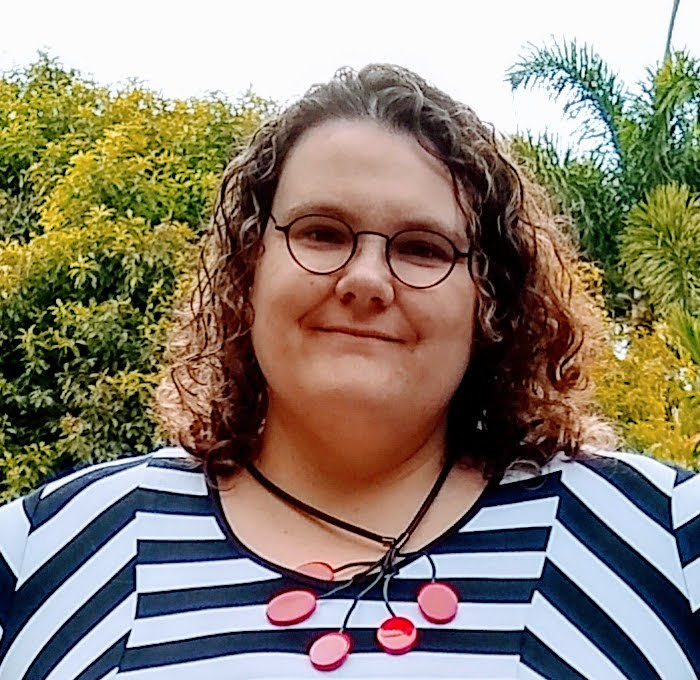This International Day of Women and Girls in Science we celebrate the role of women and girls in science, not only as beneficiaries, but also as agents of change.
We’re celebrating this special day by profiling women who have pursued careers in science to inspire Victoria’s future female scientists. Brenda Lilley is helping develop the geographic information system (GIS) capability for Emergency Management Victoria. Brenda spoke to us about her journey to a career in GIS and the obstacles and opportunities she encountered along the way.
Q&A with Brenda Lilley, Emergency Management Victoria

What inspired your career in science and how did you land in your specific field?
I work in a different field to the one I started out in. I originally went into meteorology, working as a weather forecaster, after completing an undergraduate applied science degree majoring in physics. I have always had an interest in the weather, particularly severe weather, and wanted a career where I could contribute to the community. I developed an interest in remote sensing through my work with the Bureau of Meteorology and left forecasting to pursue an opportunity as an imagery and geospatial intelligence analyst with the Australian Geospatial-Intelligence Organisation (who were Defence Imagery and Geospatial Intelligence Organisation back when I worked with them). It was in this role that I was first exposed to GIS. I moved into the emergency management sector through volunteering with the Australian Red Cross in Brisbane, assisting with developing a mapping capability proof of concept and providing geospatial support for their relief efforts following tropical cyclone Oswald.
Now I get to combine my passion for GIS and emergency management helping to develop the GIS capability for Emergency Management Victoria.
Emergency Management Victoria leads emergency management in Victoria by maximising the ability of the emergency management sector to work together and to strengthen the capacity of communities to plan for, withstand, respond to and recover from emergencies. I love GIS because it is a constantly evolving technology space. Every year there are new and exciting advancements in the field. There are researchers and organisations out there doing amazing things, particularly with machine learning and big data.
What are gender stereotypes for women in science?
One of the most common gender stereotypes that I’ve encountered for women in science is that women are only interested in (and therefore good at) “soft sciences” or caring/nurturing related science disciplines. The other common stereotype, which can particularly impact early career women, is that you have to be “one of the guys” or “not like other girls” to succeed in STEM. Women who present more traditionally feminine or exhibit more traditionally feminine behaviour often find they have additional difficulty getting colleagues to take them and their work seriously. It doesn’t have to be this way though.
What obstacles have you faced as a female in a STEM career?
The biggest obstacle I faced in my career was myself. More than once, I have stumbled with imposter syndrome. The gender bias in STEM fields certainly feeds into this feeling. Constantly being reminded that you are considered “less than” your male colleagues does contribute to the internal narrative of not being good enough, smart enough or qualified enough. But you pick yourself up, dust yourself off and remind yourself that you are just as qualified and experienced as the people that you work with. I have also faced the usual gendered obstacles like sexism and harassment. This was particularly prevalent early in my career. I was told that training women is a waste because “you’re just going to leave to have children”. I have been called a diversity hire and made to do admin work instead of my actual job (along with the other women on the team) because “women are just better at that stuff”. These experiences led me to take fewer risks with my early career, to not try and reach as high.
How do you address the gender gap in your specific area of science?
The gender gap in GIS is not as big as many other disciplines. We see women working on cutting edge research and development for industry leading organisations. Where we do still see a gap in the industry is women not being as heavily represented in leadership positions as they are at other levels. I have worked in many GIS teams where the workforce was majority female, but all the GIS managers were male. This is changing quite swiftly, so we need to continue to encourage and mentor early career women into positions of leadership.
What have you done in your career that you are most proud of?
I’m proud of many things in my career. I have had an unusual career path which has allowed me to make an impact at the local, state, national and even international level. My work has informed and influenced the evacuation of personnel from conflict zones, the distribution of aid to areas devastated by natural disasters and the prosecution of trans-national criminals. I am proud that my work has, and will continue to have, a positive impact on community.
Discover more
You can discover more stories about women who have pursued careers in science to make a real difference.
We invite you to read and share the stories, and celebrate women in science to inspire our future female scientists pursue their passion and make waves across industries.
